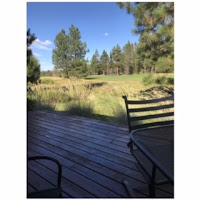Testing the retirement–planning the road trip
Earl and I decided to make the first post-retirement travel adventure a three to four week road trip through the national western parks. This year seemed like a good time. Seeing the parks is something we've always wanted to do. Work schedules don't dictate the start and end dates of trips any longer and we've gained some information about how well Skeeter and I travel. We've been flying to Maui and driving to various family vacation destinations–running the gamut from minimal luggage to everything but the kitchen sink. We know Skeeter's battery lasts only so long, as well as what terrain she can and can't handle. We've been able to handle most scooting disasters that have occurred. My bladder is good for three hours or 200 miles (whichever comes first). At this point, I'm semi-ambulatory (with a walker). We were probably as prepared as we'd ever be.
 |
| Thank you, Google Maps |
We elected to rent an extended minivan similar in size to what we take on our annual family vacation**. We know it can accommodate our gear (Skeeter, Winnie, Earl's bike, my trike), food and luggage. Packing for five days in Central Oregon isn't very different from a month–long road trip. There's more laundry, but that's what laundromats are for.
 |
| Hope it's ADA–compliant |
We took a trip to AAA to make a few hotel reservations. Just enough to make sure there was room at the more touristy places, yet allow for the "move on" or "let's stay another day" flexibility we wanted. The last thing Earl needs to deal with is a 'NO VACANCY' sign and me with a full bladder.
 |
| Travel entertainment |
 |
| Add wine—we're there |
I know I sound like a broken record regarding technology, but it does have a positive impact on travel. Certainly any of my children who want to will be able to track us with Find My Friends. We'll be able to stay in touch and 'see' the grandchildren during Facetime calls. But, it also prevents marital arguments. Google Map's talking directions ensure 1] Earl doesn't have to ask for directions (like that's going to happen) 2] we don't get lost somewhere, and 3] I don't have to navigate in a moving car (the nystagmus that comes with ataxia can cause vertigo and nausea when reading directions.Throwing up is so unattractive). The app Yelp will let us know the nearest restaurant or hotel is, give us directions, and even makes reservations. Really, what's not to like about technology?
There are several ways to share trip photos. I'll bore family and friends when we get back (stay tuned). But a friend and I took a photography class at the Apple Store last month. The instructor suggested that I post progress photos to an FYI album only for prospective hosts. I have friends that publish a more extensive travel blog for their European excursions. But they are more disciplined than me. I wanted a solution that was automatic, affords some security, and didn't depend on motivation or wi-fi connectivity.
The lesson: Road trip adventures will have pitfalls. Staying flexible, but aware should serve us well.
*Previous post: Rules of the Road, paragraph 1
**Previous post: Runaway walker, paragraph 1
***Previous post: You've Got Mail
****Previous post: Audiobooks: another kind of friend
*****Previous post: Untoward Exits




Looks great! Can't imagine planning the trip AND writing about planning the trip! Shoot me now. Wish I could offer you a place to stay but my extended family in residence doesn't appear to be ending any time soon.
ReplyDeleteThe map is very tentative. Meant to be graphic, not route predictive.
ReplyDelete